Employee Referral Programs: 3 Key Takeaways
- Restaurant employee referral programs slash hiring costs — saving over $5,000 per hire.
- Referred hires stay 46% longer than those from job boards, boosting team stability.
- Top-performing programs fill 35–40% of roles through referrals.
Restaurant employee referral programs are one of the most effective ways to solve today’s toughest hiring challenges.
With staffing issues affecting over half of restaurants, it’s time to rethink your recruitment strategy.
This guide shows you how to design, launch, and optimize a referral program that lowers costs and turns your team into your best recruiters.
Design Your Restaurant Employee Referral Program Framework
The first thing you need to remember is that successful referral programs start with a solid foundation of clear objectives and measurable outcomes.
Below are key points to consider.
Setting clear program goals and metrics
You want to establish specific, trackable goals for your restaurant employee referral program.
Best-in-class referral programs typically achieve a 35-40% referral hire rate.
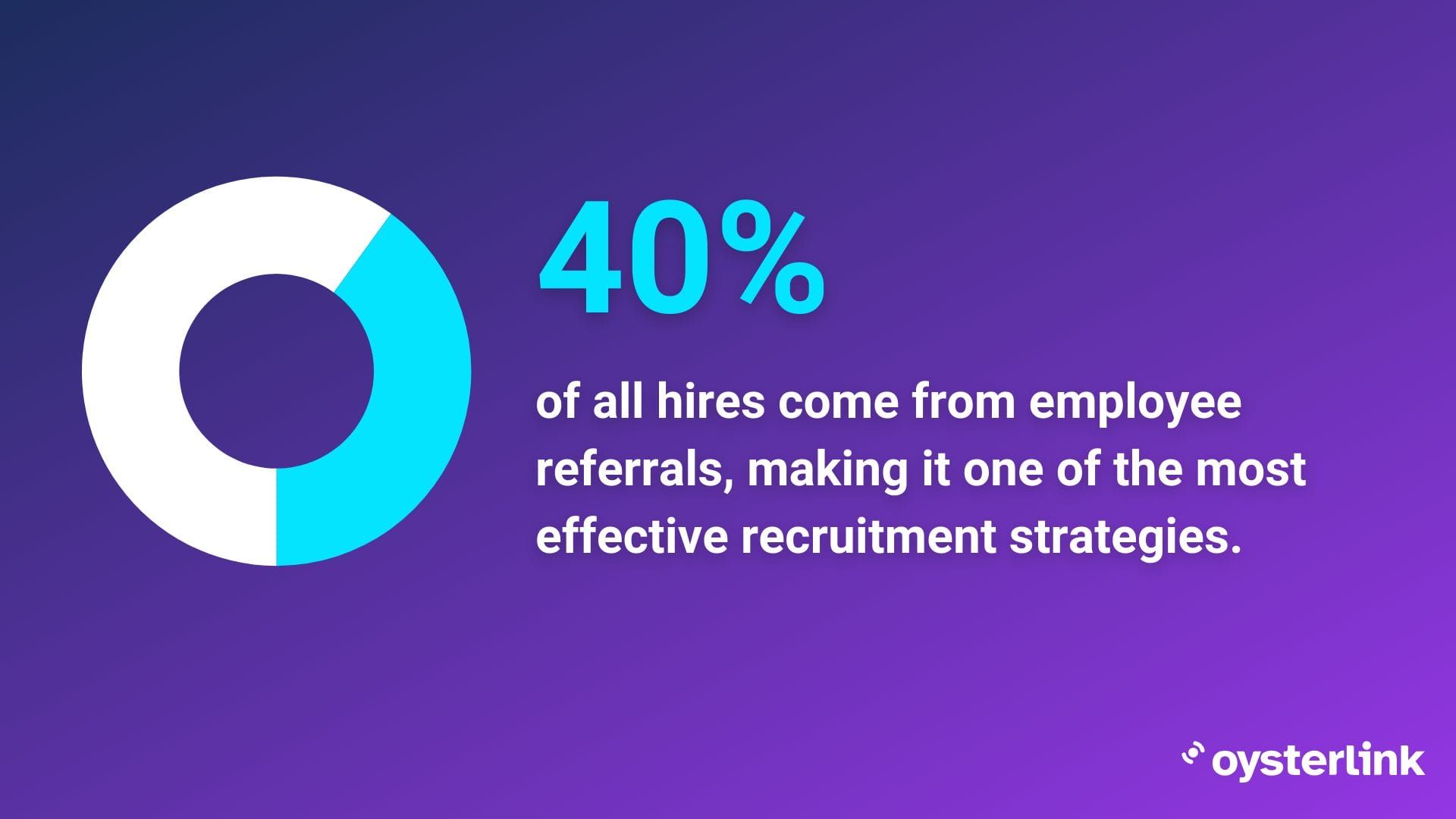
To measure success, track these key metrics:
- Referral rate (percentage of hires from referrals)
- Participation rate (percentage of staff making referrals)
- Time-to-hire for referred candidates
- Retention rate of referred employees
- Program ROI and cost savings
Defining eligible positions and rewards
Your employee referral incentive structure needs to align with both your budget and hiring goals.
Additionally, consider implementing a tiered reward system based on position type and difficulty to fill.
For your restaurant referral program, consider these reward options:
- Monetary bonuses (most effective for quick results)
- Extra vacation days or preferred scheduling
- Gift cards or experience-based rewards
- Special recognition programs
Creating program guidelines and rules
Most successful programs delay rewards until referred employees complete 90 days of employment.
Make the referral process straightforward by creating detailed job descriptions for open positions.
Moreover, establish clear documentation requirements and submission procedures.
Your guidelines should specifically address multiple referrals for the same position and define exactly who's eligible to participate in the program.
Remember to communicate these guidelines effectively.
Post them in easily accessible locations like your employee break room and digital platforms.
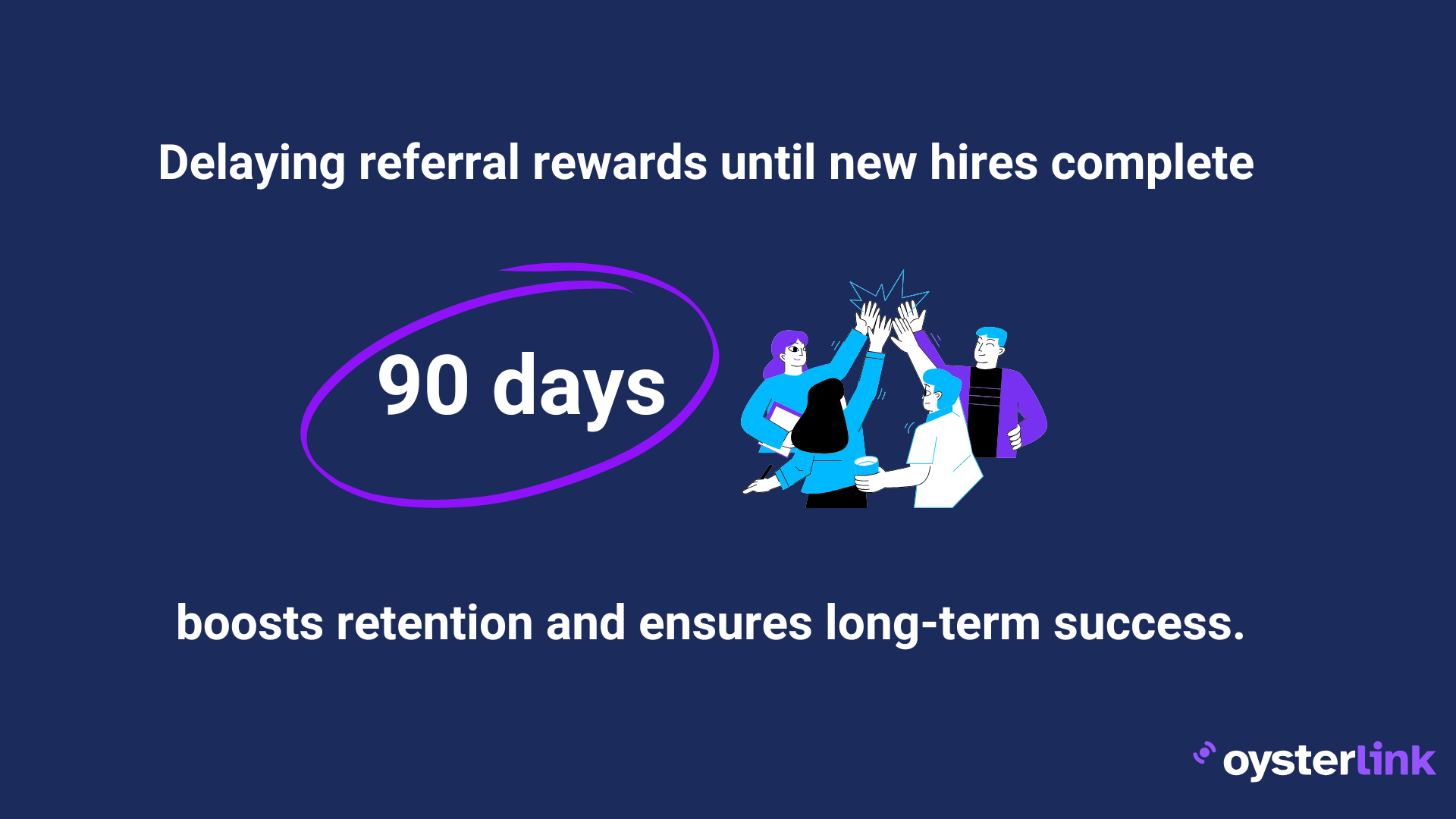
Structure a Referral Bonus Program That Motivates Your Team
Now that we've established our program framework, focus on creating an effective reward structure that motivates participation.
We've found that the right mix of incentives can significantly boost referral rates and program success.
Monetary vs non-monetary incentives
The best restaurant employee referral programs mix cash and non-cash rewards.
Interestingly, research shows non-monetary incentives are 24% more likely to leave a lasting, positive impression than cash alone.
Here are some great ideas to make your referral program shine:
- Cash bonuses: $500–$1,000 for each successful hire
- Exclusive experiences: Priority reservations, Chef’s table access or tasting events
- Public recognition: Special badges, shoutouts and team celebrations
- Gift cards: Dining vouchers or store credits
Tiered reward structures by position
A tiered reward structure that grows with referral success is a proven way to keep motivation high and engagement strong.
It’s a simple yet powerful way to encourage ongoing participation and drive results.
Tiered programs bring a fun twist that motivates employees to hit milestones and climb through membership levels.
This sense of accomplishment can keep them excited to keep participating in your restaurant employee referral program.
Payment timeline and conditions
Establishing clear payment conditions is crucial for program success.
Here are the recommended guidelines:
- Verification period: Process referral rewards after the new hire completes 30 days of employment.
- Payment method: Set up direct deposit for efficient reward distribution.
- Documentation: Require employees to submit through official channels so they may qualify for rewards.
Essentially, tracking referrals through a formal system ensures fair reward distribution and program transparency.
Launch Your Employee Referral Program for Maximum Impact
In short, the success in launching your restaurant employee referral program hinges on execution and communication.
Train managers and staff
Restaurants with solid training programs see a 24% boost in referral participation.
Taking time to walk your team through the process can make a big difference.
It's helpful to cover:
- How the program works and who can join
- What the rewards are and when they’re paid
- How to handle the paperwork
- Tips for making great referrals
A little training goes a long way in getting everyone excited and ready to take part!
Create promotional materials
Your referral program thrives when it’s visible across multiple channels.
Studies show emails and SMS drive the highest engagement for promotion.
A strong multi-channel strategy helps keep the momentum going.
Implement tracking systems
Tracking is key to making your restaurant employee referral program a success.
Research shows referral impressions get five times more engagement than paid ads.
With the right system in place, everything runs smoother and delivers better results.
Here are simple and effective steps to track referrals:
- Give each employee a unique referral code.
- Automate reward distribution to save time.
- Monitor conversion rates by group or role.
- Track how often referrals are shared and used.
- Keep a record of all referral activity.
By focusing on training, promotion and tracking, your restaurant can see real improvements in hiring.
Keep the momentum going by communicating regularly and sharing success stories to keep everyone engaged.
Manage Your Employee Referral Platform with Ease
A smooth and efficient employee referral program starts with strong operations.
Certain key elements help restaurants keep things running seamlessly, leading to better results and more engaged employees.
Processing referrals efficiently
Simplifying the referral process is key to making it successful. Restaurants that make tracking easy and automated see much better participation.
A simple, clear process encourages more employees to join in and stay engaged.
Here's what you can do:
- Implement an online referral form system.
- Assign unique tracking codes to each referrer.
- Set up automated confirmation emails.
- Review applications within 48 hours.
- Update referrers on their referral status.
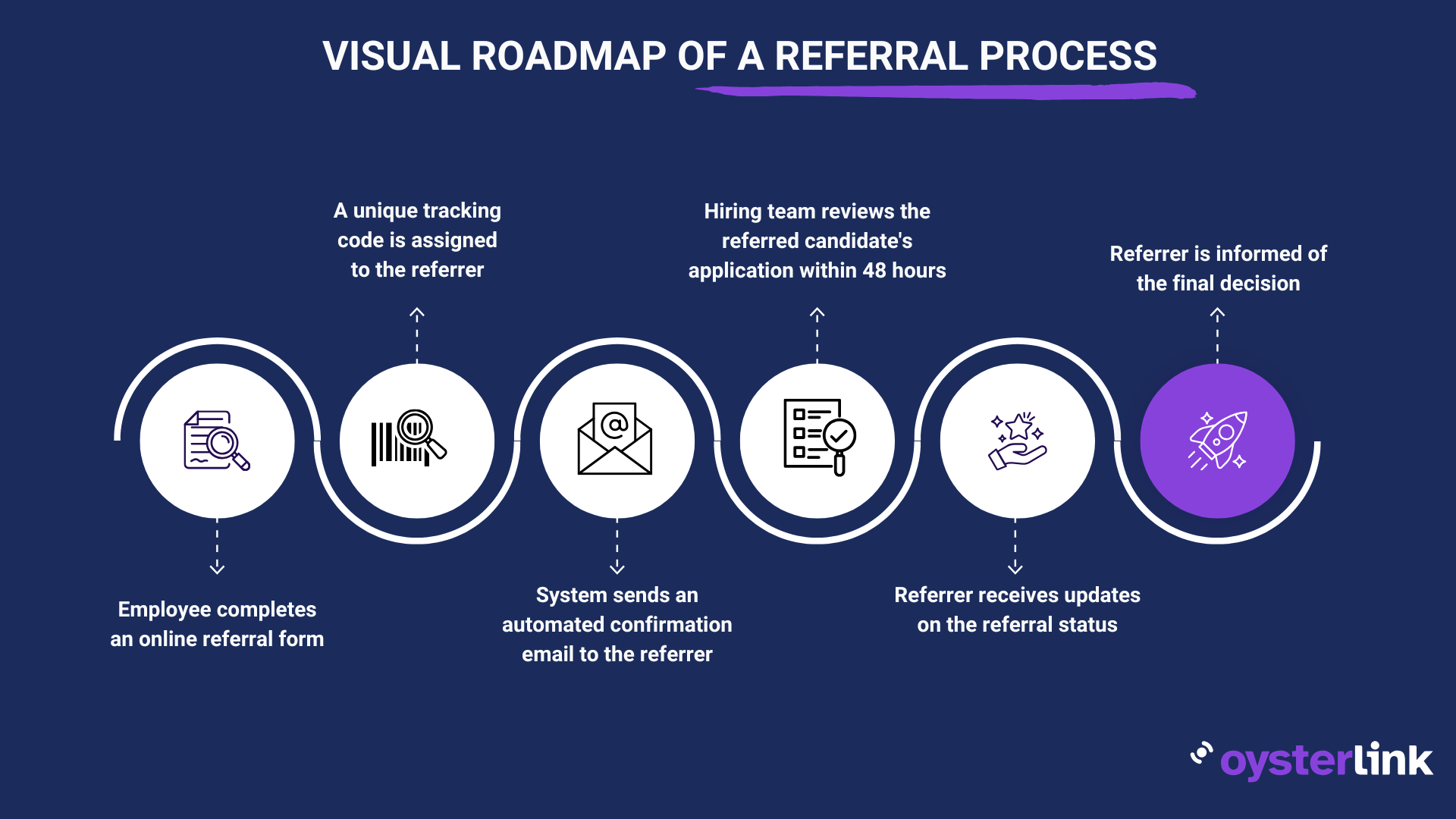
Handling multiple referrals
As a result of a successful program launch, you might receive multiple referrals for the same position.
Generally speaking, we recommend following these guidelines to maintain fairness:
- Process referrals on a first-come, first-served basis.
- Track all referrals in your system, even after a position is filled.
- Keep secondary referrals on file for 90 days.
- Notify all referring employees about the status of their referrals.
Maintaining program documentation
Above all, proper documentation is key to ensuring transparency and measuring the success of a referral program.
Comprehensive tracking plays a crucial role in maintaining effectiveness.
Essential documentation should include:
Using referral program software that integrates with your current systems can greatly simplify tracking and managing referrals.
This integration automates key processes and provides valuable insights into how the program is performing.
A well-structured documentation system goes beyond basic metrics to ensure transparency, efficiency and long-term success.
Here’s what a strong documentation and tracking system should include:
- Keep track of all interactions between referrers, candidates and the hiring team.
- Maintain organized records of when rewards are issued, to whom and for which referrals.
- Generate reports that highlight referral activity, conversion rates and overall program success.
- Document any adjustments to program policies or reward structures.
- Track referral activity by season or hiring cycle to identify patterns.
By integrating these procedures, restaurants can create a referral program that not only runs smoothly but also grows stronger over time.
Measure and Optimize Referral Recruitment Performance
To get the best results from your restaurant employee referral program, it’s important to make smart adjustments along the way.
Here’s how to measure success and keep improving with data-driven insights:
Tracking key success metrics
Essentially, successful referral programs require careful monitoring of specific metrics. B
ased on our industry benchmarks, best-in-class teams achieve a referral rate of 35-40% of total hires.
We recommend tracking these vital KPIs:
Gathering employee feedback
Collecting feedback is key to keeping referral programs effective and engaging.
A well-rounded approach helps boost participation and ensures the program continues to deliver great results.
The best way to do this is by gathering input from three key areas — managers, employees and the overall referral experience.
Here are the things to focus on for each key area:
1. Manager Insights
- Quality of referrals
- Feedback on how smoothly the process runs
- Data on hiring outcomes
2. Employee Perspectives
- How easy the program is to use
- Satisfaction with rewards
- Ideas for improving the process
3. Referral Experience
- Feedback on the application process
- Clarity and effectiveness of communication
- Overall satisfaction with how referrals are handled
Regular feedback from all sides keeps the program fresh, user-friendly and rewarding for everyone involved.
Making program adjustments
Great restaurant referral programs get even better with regular tweaks based on feedback and results.
Programs that review their terms every few months tend to see higher engagement and better performance.
A little fine-tuning can go a long way!
Here are a few simple ways to keep your program fresh and effective:
1. Adjust rewards
- Increase bonuses for harder-to-fill roles
- Update payment schedules if needed
- Try new incentives to keep things interesting
2. Improve the process
- Make the referral process quicker and easier
- Strengthen communication so everyone stays informed
- Upgrade tracking tools for smoother management
3. Boost engagement
- Focus on areas where referrals are low
- Celebrate and recognize employees who refer the most
- Refresh flyers, emails, and materials to keep the program top of mind
Keep the momentum going by sharing updates and success stories with your team.
With regular check-ins and improvements, your referral program will continue to grow and bring in top talent!
Build One of the Best Employee Referral Programs in the Industry
Set clear goals, track the right metrics and build rewards that genuinely excite your team.
Launch with energy - make sure everyone’s trained, informed and ready to jump in.
The smoother your operations, the more sustainable and rewarding the program will be.
But don’t stop there - your referral program should grow and adapt.
Use performance data and employee feedback to keep things fresh and effective.
Regular check-ins and small adjustments can lead to big wins.
When done right, your restaurant employee referral program can turn hiring from a constant struggle into a smooth, talent-attracting machine.




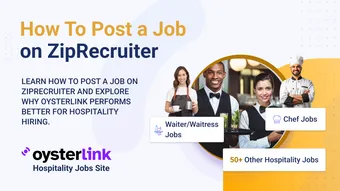

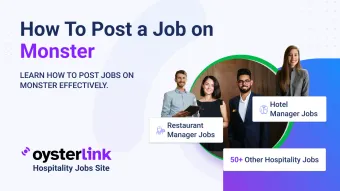
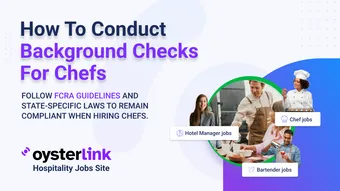


Loading comments...